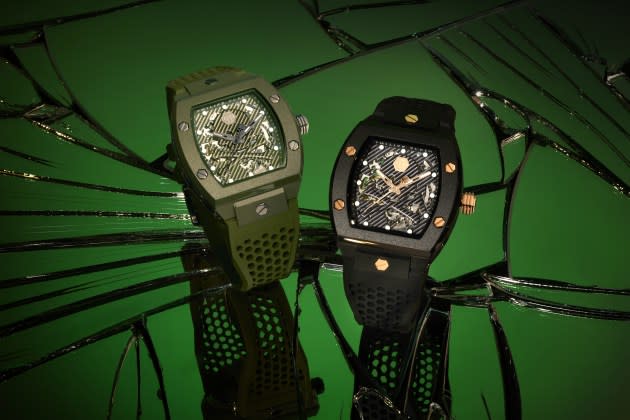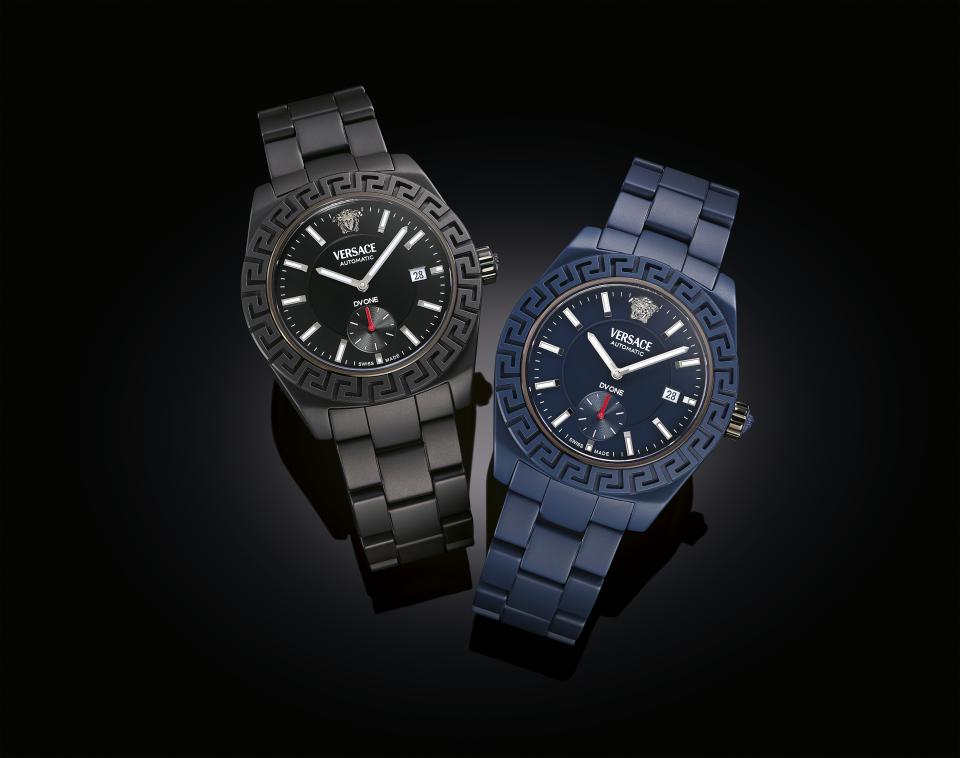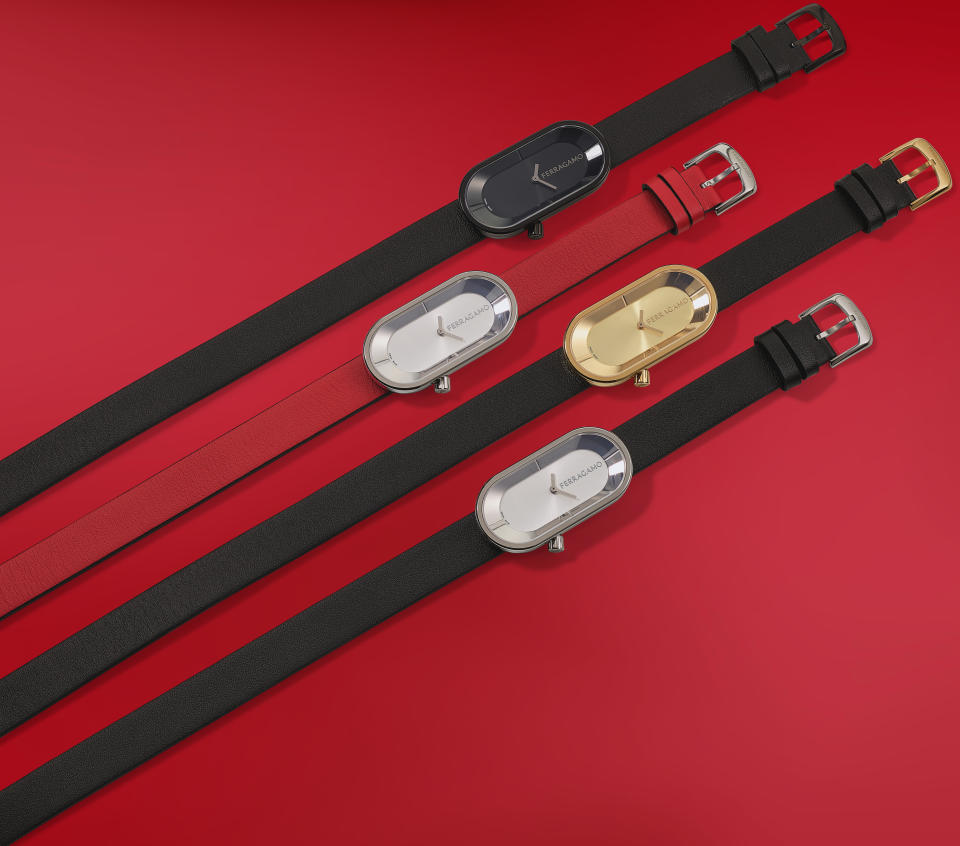Timex Group Luxury Division Has Big Plans for Versace, Philipp Plein Timepieces
- Oops!Something went wrong.Please try again later.

MILAN — Since the Timex Group Luxury Division was set up in 2005, the watch sector has changed dramatically, with a growing appetite for high watchmaking pieces and reportedly less drive for mid-priced designs.
That hasn’t stopped the Switzerland-based division of the American Timex Group to maintain its momentum, leveraging its portfolio of fashion brands, which includes Versace, Ferragamo, Missoni and Philipp Plein.
More from WWD
Philipp Plein Inks Beachwear License in Lifestyle-leaning Effort
Successful Synergy: How Collaborations Have Shaped the Watch World
“The past few years have been very positive for us, thanks to certain stylistic choices and the expansion of our portfolio,” said Paolo Marai, president and chief executive officer of the division.
That comes against a not-so-favorable market, he opined. “Export trends, especially in our price range, have been negative over the past two years. On the contrary, we were able to keep progressing year-over-year,” he said.
Marai attributed the division’s performances to its high-quality stance, ensured by its in-house Swiss atelier, and broad distribution, with a footprint in about 64 countries globally.
“Ten years ago, when we only leveraged a couple of regions, we were more exposed to market and geopolitical headwinds. Today it’s much more balanced,” he said.
Versace is the division’s jewel in the crown with a strong footprint and consumer interest in the U.S. and Middle East. It currently accounts for the bulk of the company’s revenues, although the executive declined to provide exact figures.
The luxury division was established by parent Timex Group in 2005, debuting its first collection of timepieces with Versace at that time. It added Salvatore Ferragamo in 2007 and Missoni in 2019. In 2021 it inked an agreement with Philipp Plein, who, as reported, has big ambitions, and a personal passion, for watches.
Marai said the company’s aim is to keep growing the Versace profile, seeing huge potential across geographies. “It’s the lion’s share in term of revenues,” he said. “It’s the longest-standing relationship we have and it keeps growing at significant rates, even beyond our expectations. It shows that the brand’s vitality is remarkable,” he said.

Marai underscored how from the watchmaker’s perspective, the acquisition of Versace by Capri Holdings in 2017 has been a successful move. It’s yet to be seen if Capri’s takeover by Tapestry Inc., likely poised for completion in 2024, will have any impact on the watch business but the executive sounded confident in forecasting a double-digit increase in revenues in Versace timepieces next year.
“The brand is experiencing a very positive and happy moment. We know there’s a cyclic nature to brands’ [desirability], and this is a very positive phase,” Marai opined.
“It’s been very true to itself with razor-sharp defining codes, which were telegraphed not necessarily always in a loud and strong manner,” he said. “The Versace DNA is strong, by all means, but it was expressed in a subtler way most recently,” benefiting the watch division, he added.
The main market for Versace timepieces used to be the Middle East but was recently replaced by the U.S. and more broadly the Americas, which have seen substantial growth in the past few years, Marai said.

This aligns with the distribution footprint of the watchmaker’s portfolio.
Although the Ferragamo brand is in a restructuring mode and the midterm strategy has yet to pay back (sales in the nine months to Sept. 30 dipped 8.3 percent to 844.2 million euros), Marai said that the Florentine house is maintaining momentum in its key watch market of Asia, with a particularly strong performance in South Korea, where the division partners with a local distributor that operates retail units. The brand has also expanded its footprint in underdeveloped regions, including the Middle East, the U.S. and Europe.
As for the newly licensed Plein, Marai argued that it was the fastest growing brand under the company’s umbrella. “It’s the latest we added, but already a pillar,” he offered. “It’s especially crucial in Europe, which was a disadvantaged market for us. Traditional Swiss watchmaking culture has penalized us so far, but Plein has a strong appeal from consumers,” Marai said.
“Our partnership with him is very tight because he’s founder and designer and spokesman. He obsesses over timepieces and has a strong grip on everything, from product creativity to distribution. He’s committed on all fronts,” Marai explained.
Plein and Timex Group Luxury Division’s plans for the former’s debut in the Swiss watchmaking arena were very ambitious, with positioning above all other brands in the latter’s portfolio.
“It’s a statement-making positioning, very expensive and we will launch movements that are considered as the Olympus of watchmaking, retailing at about 40,000 or 50,000 euros,” Marai said.
The inaugural collection, unveiled on the sidelines of Watches & Wonders last March, kicked off Plein’s “phygital” project, which boasted a range consisting of eight Crypto King and six Crypto Queen timepieces, each paired with an NFT art piece by artist Antoni Tudisco. They are priced between 2,700 and 20,000 euros.
Timex Group Luxury Division is betting big on Plein’s retail footprint, knowing it would have been trickier for it to tap into the right consumer for the pricey and loud Plein designs.
“Taking the collection on the road, he collected orders from consumers around the world who paid for the watches in full and will receive them in six months’ time… He has an impeccable appeal on end consumers, so we favored direct distribution,” he explained. “That said, we’re mapping the retail scene to try and find partners in our network, but we need to be careful because it’s a flagship project and we have to avoid missteps.”
Plein’s high-priced timepieces are not Timex Group Luxury Division’s first attempt at such a positioning. Until 2009, Marai said, both Ferragamo and Versace offered pricey tourbillons embellished with baguette-cut diamonds retailing for as much as 140,000 euros.
“The year 2009 changed the landscape, and especially fashion brands lost some of their appeal on consumers when it came to watches, in light of the economic crisis,” he said. “Now this trend is flipping again and we see growing demand for mechanical self-winding movements and diamond-bearing designs. The market is constantly evolving and it’s becoming easier to sell expensive watches rather than entry-price styles, so in the upcoming months and years we will bank on pricier items in our collections.”
After inking a licensing deal in 2019, Missoni is still on a learning curve.
“It’s a brand with huge potential but still underdeveloped,” Marai said. “There’s almost always proportionality between the brand’s and the watch business’ sizes,” he added, noting how the Missoni brand’s revamp has yet to tackle crucial pillars, such as distribution. The watch business has “kicked off and the collections have a good sellout, but market expansion is still a work in progress,” he said, pointing out that Europe and the Middle East account for two thirds of the brand’s watch sales, followed by the U.S.
Although no deal is on the short-term horizon for the luxury division, the executive said the company is actively monitoring the fashion landscape and engaging in conversations with potential partners.
“That’s how you ensure long-term survival for the company. We do receive requests every month for partnerships, collaborations and licensing deals, but we’re very careful,” he said. “Very often these are brands with no watch business and are hard to consider, and then our number-two priority for us is that brands have international appeal.”
The division, Marai said, is expected to post a 22 percent gain in revenues this year compared to 2022 on a comparable basis, which includes offsetting the impact of the end of the Versus license, the now-defunct Versace sister brand, last July.
The portfolio is now focused on the core fashion partnerships. In 2019 the division brought back the Vincent Bérard luxury watch brand, one that it had acquired in 2005, shuttered in 2010 and resurrected four years ago with a sustainable ethos. The brand has since again been paused but the executive said it’s not been shuttered entirely.
To be sure, the brand’s sustainability credentials transcended the green-focused label. The Timex Group has made strides in enhancing its business model, embedding eco-friendly materials, including recycled PET, in about 85 percent of its products in the most recent spring 2024 collection; reducing 45 percent of plastic use from its packaging, and streamlining energy and water supply. It has also set up a Sustainability Steering Committee that is responsible for making strategic decisions, and working groups responsible for implementing sustainable practices across operations.
The U.S.-based Timex Group sold a majority 65 percent stake in late 2020 to Boston-based investment firm The Baupost Group LLC.
Best of WWD

